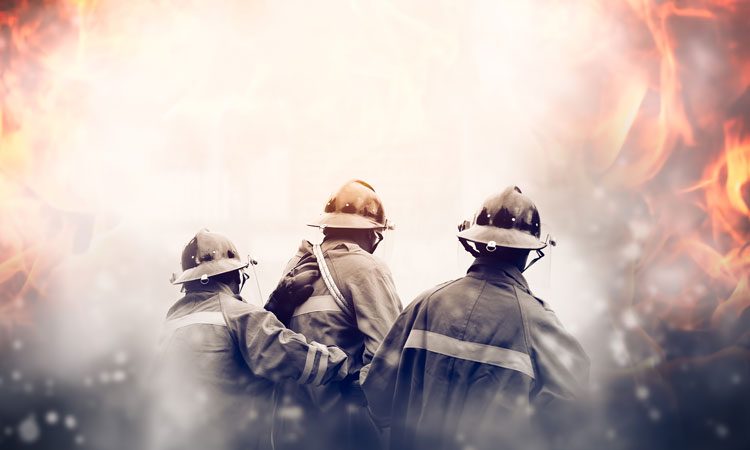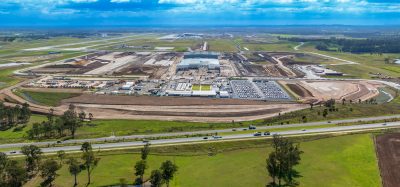Christchurch Airport uses virtual training for emergency realities
- Like
- Digg
- Del
- Tumblr
- VKontakte
- Buffer
- Love This
- Odnoklassniki
- Meneame
- Blogger
- Amazon
- Yahoo Mail
- Gmail
- AOL
- Newsvine
- HackerNews
- Evernote
- MySpace
- Mail.ru
- Viadeo
- Line
- Comments
- Yummly
- SMS
- Viber
- Telegram
- Subscribe
- Skype
- Facebook Messenger
- Kakao
- LiveJournal
- Yammer
- Edgar
- Fintel
- Mix
- Instapaper
- Copy Link
Posted: 10 January 2020 | Christchurch Airport | No comments yet
Christchurch Airport turned to virtual reality technology to aid the training of airport fire fighters: An example of innovative evolution within airport operations.


Airport fire fighters do some of the most challenging work on the campus and are considered by many to be heroes.
At Christchurch Airport, New Zealand’s second largest airport, the fire fighters are first on the scene at more than 500 on‑campus emergencies every year. This includes fires, rescues, alarm activations, fuel and hazardous material spills, special services, medical emergencies and aircraft incidents.
The men and women of the fire service are highly and specially trained. They hone their skills every day they are on duty, but there is one aspect of their work which has been very difficult to train for. Until now.
The airport’s fire fighters have added another aspect to the way they train for aircraft fires, using virtual reality (VR) equipment. This means that training that takes part in an aircraft that is on fire is no longer necessary; the inconvenience of clearing an area to carry out a training session is negated whilst safety concerns are mitigated.
Tim Morris, Manager Airfield Operations, said the money being invested in the fire service gives the team the experience of managing an aircraft fire without actually being in such a fire.
“Using VR takes us from observation to immersion and is the next generation of training and recruitment. We can simulate real situations that are otherwise almost impossible to train for in real life,” he said.
“The fire fighters will be able to fight fires without fighting fires, so when the time comes to fight an actual aircraft fire, they will be working in an environment they are familiar and confident with.”
The VR experience means the fire fighters are the first in New Zealand to don headgear to visualise and interact with a very tough situation, and Manager Airport Fire Service, Peter Moore, said it’s truly significant.
“This training replicates possible fire scenarios on a scale not possible in our training area, so it is a very valuable addition to the suite of training options we already have,” he explained. “It’s also about giving unconstrained access to the interior and exterior of various aircraft so they are well familiarised, prepared and have confidence to work in and around the aircraft, enter safely, navigate their way through it in very low visibility, locate specific items, perform emergency shutdown of aircraft engines, work with the specialised equipment they carry and of course save lives.”
Offering such specialised training in this way also reduces production and operational costs, as well as having the ability to continue to develop over time.
The initiative was developed in collaboration with Christchurch-based company Corvecto, to produce an innovative and powerful virtual reality training programme which will be able to evolve as needs require.
Manager Digital Solutions and Data Technology, Art Martinson, commented: “VR offers a training platform in a situation where safety is the top priority. It means our people can train for a complex and hazardous scenario. It gives our fire fighters an environment to improve their skills safely, through training modules where they can learn and demonstrate their competency.”
The team has just completed scanning a second aircraft to add to the training schedule, to expand the VR training opportunities, without needing access to aircraft between flights.
Tim Morris said VR is the solution for a difficult part of the fire team’s job.
“One of the tougher parts of our business is getting a new focus which offers new skills,” he said. “We have introduced groundbreaking digital technology in an innovative way to train our rescue airport fire fighters.”
The fire team has had a lot of invitations to demonstrate the VR training, including demonstrations to other airport fire teams and members of New Zealand’s parliament. Just as the fire fighters experience it, guests brave enough to put the headgear on and try the technology speak of how real the sensation is of being inside the aircraft, focused on the tasks they are assigned.
“The VR training has caught people’s imagination and they understand how it combines necessary training with sustainable training that does not put people or property at risk,” concluded Moore. “We describe it as adding ‘muscle memory’, so instinct and memory will kick in in the event of a real fire. It truly is a winwin and we look forward to adding more aircraft types to our training library.”


















